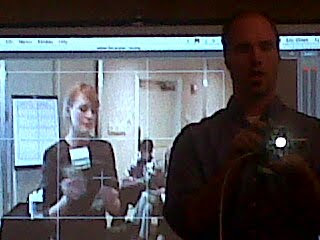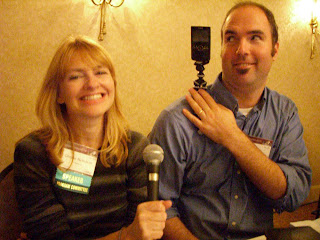Long time medical reporters shared savvy tips on how to make the most of a medical conference this afternoon at Science Writers 2010 in New Haven, CT, while a scientific press room manager revealed tips for public information officers on how to garner attention for their stories.
Seasoned medical journalist Bob Finn, the San Francisco Bureau chief of International Medical News Group discussed the ins and outs of a conference press room. He disclosed his list of essential must-have equipment for covering a conference: at the top of his list the Kodak ZI8, which records video and has an audio jack. He carries back-up recorders, batteries and a long extension cord, as you never find an outlet close to your seat. A quick snap of power point slides and posters captures all the data and figures he needs for his stories. A swift tip: shoot the conflict of interest slide, which the presenter only shows for a second right after the presentation title.
Peggy Peck, executive editor of MedPage Today, stressed the importance of “research, research, research.” Journalists should show up at the conference prepared, an easy task in the digital age. “Let your fingers do the walking,” she said. “Almost everything can be found online.” She stressed that you need to know what was written beforehand to give the story context. Without knowing the history, you can’t spot new findings from rehashed research. A key question to always keep in mind is who is funding the research. And keep your ears tuned for magic words like “coffee.” When MedPage ran a story on how coffee reduces circulating insulin, the surge of traffic crashed their site for two hours.
Eric Rosenthal, an independent medical journalist and special correspondent for Oncology Times, likes to trawl a meeting. You can be spoon fed by the press room or you can pay attention to what is happening at the meeting, he said. “I eavesdrop on the big names during the plenary sessions to see their reactions. Then I ask them afterward why they reacted that way.” He strongly feels that serendipity can be your best friend, but you also have to take advantage of opportunities that present themselves by learning the art of the ambush.
Jim Sliwa, media relations manager for the American Society for Microbiology and long time press room coordinator for two large scientific meetings provided ten clever tips to public information officers for promoting your research at a major medical meeting:
1) Do your homework before calling the meeting PIO: often they post tip sheets on their sites
2) Start early: the abstracts are submitted 6 months in advance and the scientists know they will be attending 2 ½ months before the meeting. The press rooms start putting together their packets the day after the scientists learn they are invited to present.
3) Have a story
4) Don’t piggyback irrelevant research
5) Connect: if you are putting out a press release, send a copy to the conference PIO.
6) Be transparent
7) Be helpful
8) Solicit advice and then take it to heart
9) Don’t play games: people remember when they have been burned
10) Remember: Bigger isn’t always better. If a conference PIO spreads your story by word of mouth, even if they don’t issue a press conference, many journalists will pick up the story.




